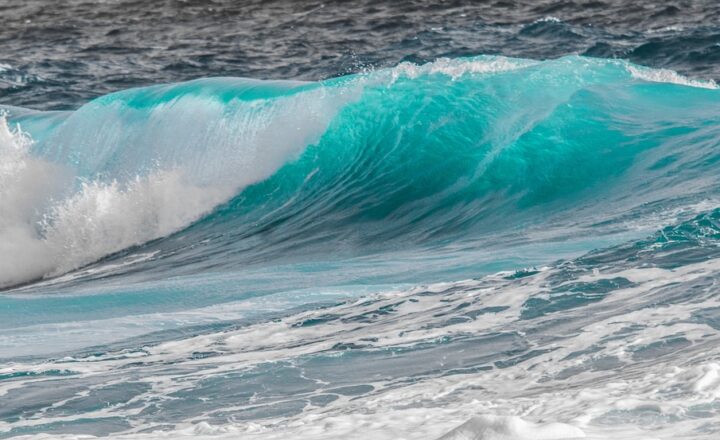The Strangest Sounds Recorded in the Deepest Parts of the Ocean
November 17, 2024

The ocean is a vast and mysterious realm, covering over 70% of our planet’s surface and containing a wealth of secrets beneath its waves. While humanity has made significant progress in exploring this underwater frontier, much remains unknown, especially in the profound depths beyond the reach of sunlight. One of the most fascinating aspects of ocean exploration is the incredible sounds that have been recorded in these depths, each painting a picture of a vibrant ecosystem filled with life, turmoil, and the strange symphony of nature. In this article, we will dive into some of the strangest sounds recorded in the deep ocean, uncovering their origins and the stories they tell.
1. The Bloop: An Unexplained Enigma
One of the most famous deep-sea sounds is the Bloop, a mysterious noise detected by the National Oceanic and Atmospheric Administration (NOAA) in 1997. The sound, described as an ultra-low frequency of over 2000 kilometers, was first thought to be icebergs cracking or meteorites hitting the ocean.
However, the sound’s unique characteristics sparked theories ranging from giant marine animals to underwater volcanoes. Despite extensive research, the true source of the Bloop remains unidentified, leaving much to the imagination. The Bloop exemplifies the ocean’s capability to mystify even experienced researchers.
2. The Upsweep: A Seasonal Mystery
Discovered in the 1990s, the Upsweep is a series of repeating, low-frequency sounds that occur during different times of the year, particularly in the spring and summer. The sound seems to originate from a specific location in the South Pacific Ocean, fluctuating between 0.1 and 0.9 Hz.
Scientists have speculated that the Upsweep might be related to volcanic activity, as the frequency aligns with tectonic movements in the region. Some researchers argue that it could also be linked to biological activity, possibly the vocalizations of deep-sea creatures. Despite these theories, the exact cause of the Upsweep remains a tantalizing mystery.
3. The Whistle: A Sonic Signature of the Cuvier’s Beaked Whale
Among the more distinct sounds recorded in the depths is the whistle produced by the Cuvier’s beaked whale. These deep-diving mammals can reach depths of 3,000 meters, and their clicks and whistles have been the subject of scientific inquiry. Recorded using underwater hydrophones, the whistles are believed to be part of their echolocation system used for hunting in the abyss.
These sounds, while seemingly simple, are intricate communications that help these animals navigate the dark waters in which they live. Researchers constantly study these sounds to understand better their behavior and interactions within their environment.
4. The 52 Hertz Whale: The Loneliest Whale in the World
The 52 Hertz whale has captured the hearts of many since it was first detected in the 1980s. This whale is famous for producing calls at a frequency of 52 Hz, a pitch unique compared to the typical vocalizations of gray and blue whales.
Despite decades of research, the species of this whale remains uncertain, leading to the haunting label of ‘the loneliest whale in the world.’ Its distinct voice has inspired documentaries and studies, accentuating the peculiarity and isolation that can exist even in the pelagic environments of our oceans.
5. The Sounds of Underwater Volcanoes
Underwater volcanic eruptions produce an array of sounds that reverberate across vast ocean distances. The cracking of magma, the explosive force during eruptions, and the turbulent waters all contribute to a distinctive range of noises that scientists have begun to catalog.
These sounds provide valuable insights into the state of underwater volcanic activity, helping researchers monitor tectonic movements and study the underlying geological processes occurring beneath the ocean floor.
6. The Vocalizations of Homo sapiens: An Underwater Affair
Interestingly, human activities also contribute to the underwater soundscape. From shipping traffic and naval sonar operations to scientific research expeditions, humans have left a significant acoustic footprint in the ocean. The sounds generated by ships can travel great distances, often intersecting with the natural rhythms of marine life.
Researchers are concerned about how these anthropogenic sounds impact marine ecosystems, particularly on species that rely heavily on vocal communication, like whales and dolphins. The intricate balance of sounds between human activity and wildlife continues to be a pressing research area as we learn more about these effects.
7. The Noise of Icebergs: A Cracking Symphony
Icebergs calving and drifting through the ocean produce unique and breathtaking sounds. As they break apart, the release of stress and tension manifests in groaning and cracking noises that reverberate through the ocean depths. Researchers have used hydrophones to capture these sounds, providing data on iceberg movements and the impacts of climate change on polar regions.
The sounds of icebergs are not only mesmerizing but also serve as a tragic reminder of the changes our planet is undergoing and the interconnectedness of all oceanic elements.
Conclusion
The deep oceans are a treasure trove of strange and wondrous sounds, each carrying stories of vibrant ecosystems, geological processes, and the impact of human activity. From the enigma of the Bloop to the beautiful whistles of marine mammals, these sounds provide a glimpse into a world that remains largely unexplored.
As technology advances, we continue to improve our ability to listen to the ocean’s depths, revealing new mysteries and deepening our understanding of the underwater ecosystem’s health and majesty. The ocean’s soundscape is a reminder of how much we still have to learn about our planet’s most elusive areas. By respecting and preserving these underwater environments, we can ensure their symphony continues for generations to come.







